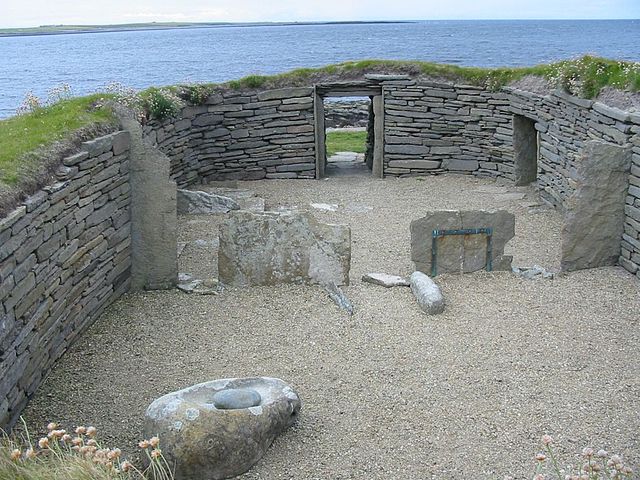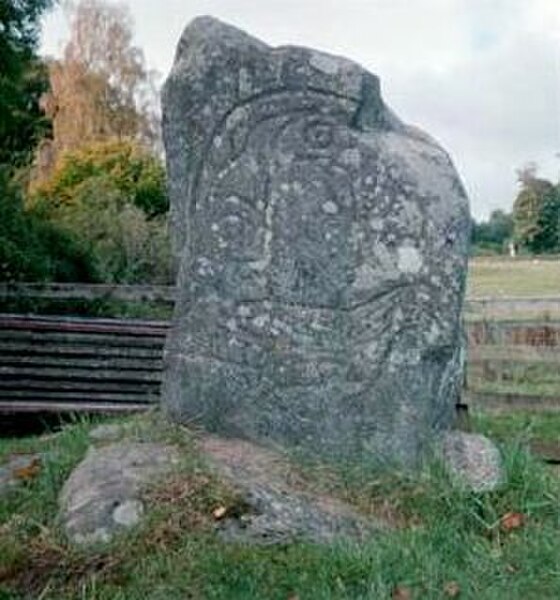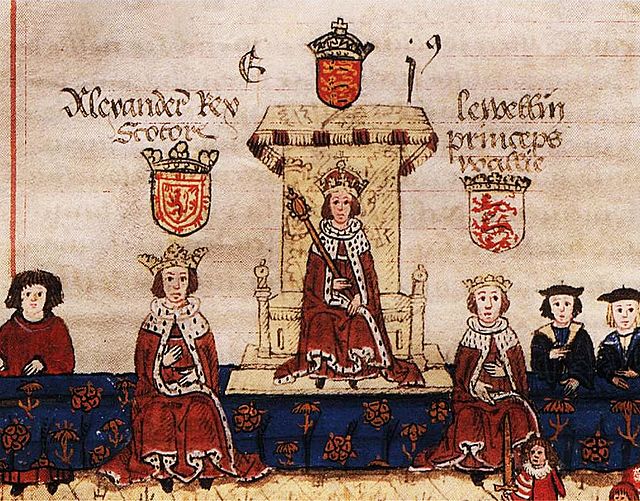The recorded history of Scotland begins with the arrival of the Roman Empire in the 1st century, when the province of Britannia reached as far north as the Antonine Wall. North of this was Caledonia, inhabited by the Picti, whose uprisings forced Rome's legions back to Hadrian's Wall. As Rome finally withdrew from Britain, a Gaelic tribe from Ireland called the Scoti began colonising Western Scotland and Wales. Before Roman times, prehistoric Scotland entered the Neolithic Era about 4000 BC, the Bronze Age about 2000 BC, and the Iron Age around 700 BC.
The oldest standing house in Northern Europe is at Knap of Howar, dating from 3500 BC.
Roman cavalryman trampling conquered Picts, on a tablet found at Bo'ness dated to c. 142 and now in the National Museum of Scotland
Clach an Tiompain, a Pictish symbol stone in Strathpeffer
King Alexander III of Scotland on the left with Llywelyn, Prince of Wales on the right as guests to King Edward I of England at the sitting of an English parliament.
Archaeology and geology continue to reveal the secrets of prehistoric Scotland, uncovering a complex past before the Romans brought Scotland into the scope of recorded history. Successive human cultures tended to be spread across Europe or further afield, but focusing on this particular geographical area sheds light on the origin of the widespread remains and monuments in Scotland, and on the background to the history of Scotland.
The Mesolithic
Maeshowe Neolithic tomb, Orkney, built c. 2800 BC
Standing Stones of Stenness, Orkney, c. 3100 BCE
Ring of Brodgar, Orkney








